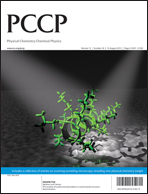Remarks on time-dependent [current]-density functional theory for open quantum systems
Abstract
Time-dependent [current]-density functional theory for open quantum systems (OQS) has emerged as a formalism that can incorporate dissipative effects in the dynamics of many-body quantum systems. Here, we review and clarify some formal aspects of these theories that have been recently questioned in the literature. In particular, we provide theoretical support for the following conclusions: (1) contrary to what we and others had stated before, within the master equation framework, there is in fact a one-to-one mapping between vector potentials and current densities for fixed initial state, particle–particle interaction, and memory kernel; (2) regardless of the first conclusion, all of our recently suggested Kohn–Sham (KS) schemes to reproduce the current and particle densities of the original OQS, and in particular, the use of a KS closed driven system, remains formally valid; (3) the Lindblad master equation maintains the positivity of the density matrix regardless of the time-dependence of the Hamiltonian or the dissipation operators; (4) within the stochastic Schrödinger equation picture, a one-to-one mapping from stochastic vector potential to stochastic current density for individual trajectories has not been proven so far, except in the case where the vector potential is the same for every member of the ensemble, in which case, it reduces to the Lindblad master equation picture; (5) master equations may violate certain desired properties of the density matrix, such as positivity, but they remain as one of the most useful constructs to study OQS when the environment is not easily incorporated explicitly in the calculation. The conclusions support our previous work as formally rigorous, offer new insights into it, and provide a common ground to discuss related theories.
![Graphical abstract: Remarks on time-dependent [current]-density functional theory for open quantum systems](/en/Image/Get?imageInfo.ImageType=GA&imageInfo.ImageIdentifier.ManuscriptID=C3CP51127H&imageInfo.ImageIdentifier.Year=2013)

 Please wait while we load your content...
Please wait while we load your content...